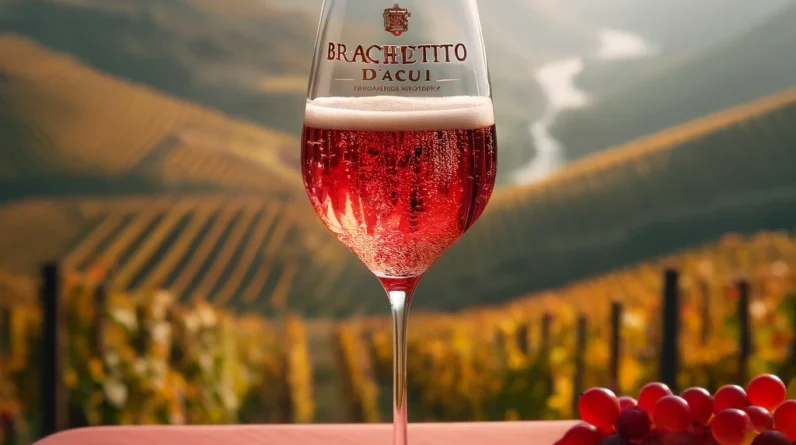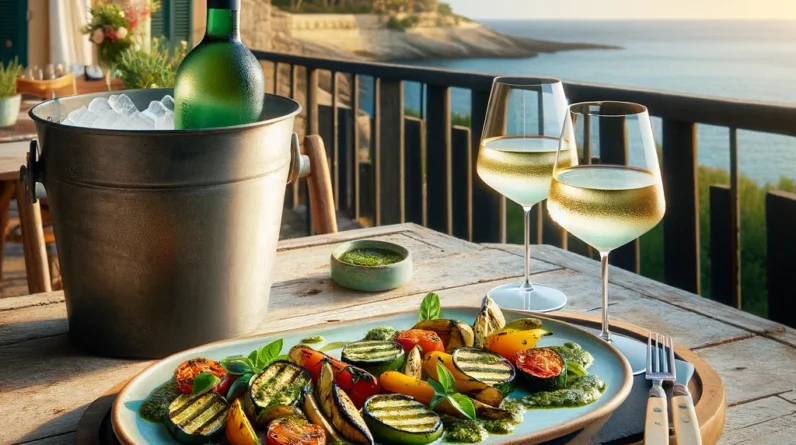
The Perfect Pair: Best Wines for Pesto Dishes
When it comes to culinary delights, few experiences elevate a meal like the perfect wine pairing.
For enthusiasts seeking to harmonize the bold, herbal notes of pesto with a complementing wine, the quest is both exciting and nuanced.
Understanding the intricate dance between the flavors of pesto and the characteristics of wine can transform your dining experience from simple to sublime.
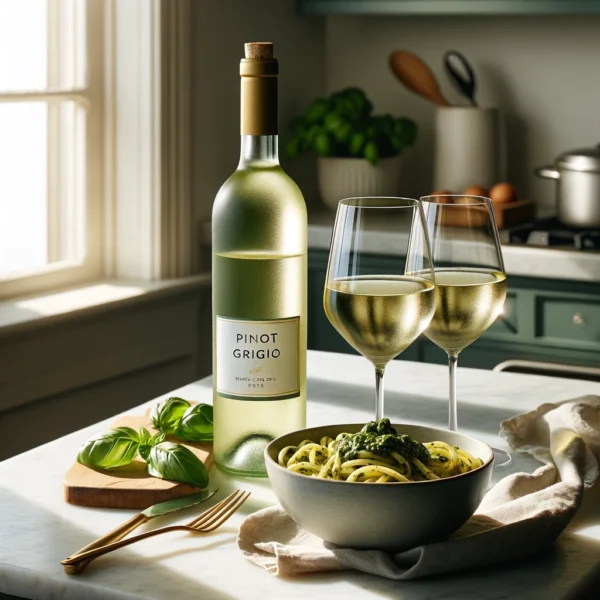
Understanding Pesto’s Palette
Pesto, with its roots deep in Italian cuisine, is a rich blend of flavors.
It combines fresh basil, pungent garlic, crunchy pine nuts, sharp Parmesan cheese, and smooth olive oil.
This mix creates a sauce that’s both bold and aromatic.
Because of its strong taste, choosing the right wine to go with pesto is crucial.
The ideal wine should not only match pesto’s intensity but also harmonize with its richness and unique taste notes.
When selecting a wine, think about how its characteristics will interact with pesto’s flavors.
You want a wine that complements, not competes with, pesto. The goal is to find a balance.
The wine should cut through the sauce’s richness without overshadowing its herbal and garlicky notes.
For a match made in culinary heaven, consider the body and acidity of the wine.
A wine with good acidity can cleanse the palate, making each bite of pesto as delightful as the first.
Meanwhile, a wine that’s too heavy might overwhelm the pesto, while one that’s too light might get lost against its robust flavors.
In essence, the perfect wine pairing respects pesto’s complexity and enhances the dining experience.
It’s about creating a harmony of flavors that allows both the pesto and the wine to shine.
With the right wine, a dish featuring pesto becomes more than just a meal; it becomes a celebration of taste.
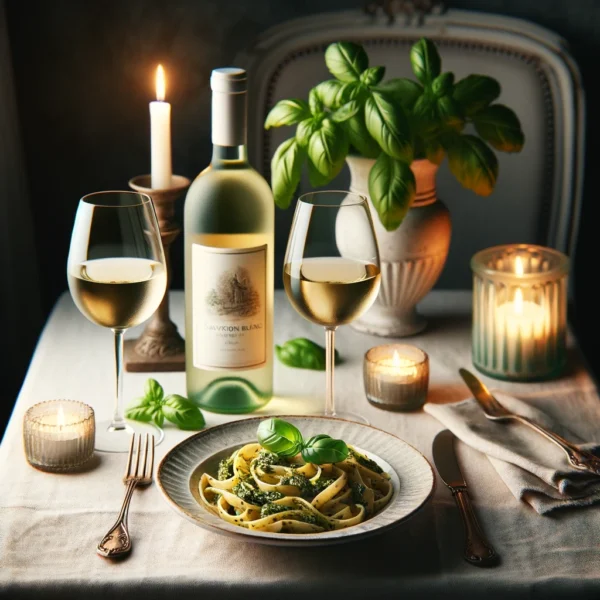
White Wines: The Crisp Companions
Sauvignon Blanc: A Refreshing Match for Pesto
Sauvignon Blanc stands out for its lively acidity and green, herbaceous qualities.
Think of the crispness of a freshly sliced green apple or the tang of a ripe grapefruit.
These elements make it an excellent companion to pesto.
The wine’s natural zestiness plays well with the sharpness of fresh basil and garlic found in the sauce.
Its ability to cut through the richness means each bite of pesto feels as invigorating as the first.
A classic example would be a Marlborough Sauvignon Blanc from New Zealand.
Known for its pronounced flavors of lime, melon, and fresh herbs, it’s a choice that promises to lift the flavors of your pesto dish to new heights.
Vermentino: Coastal Elegance Meets Herbal Complexity
Vermentino, hailing from the sun-drenched coasts of Italy, brings a unique profile to the table.
Its signature lemony zest and subtle almond finish offer a delightful contrast to pesto’s rich texture and depth.
The slight bitterness akin to green almonds accentuates the pesto’s own nutty characteristics, while its crisp acidity and mineral undertones provide a refreshing balance to the olive oil’s smoothness.
A Ligurian Vermentino, with its refined elegance and hints of Mediterranean herbs, mirrors the complexity of pesto while adding a bright, clean finish that cleanses the palate beautifully.
Pinot Grigio: Lightness That Enhances
Pinot Grigio, known for its light body and gentle citrus flavors, serves as a harmonious partner to pesto.
Its understated elegance lies in its soft touches of lemon and green pear, which gently uplift the pesto without overwhelming its delicate balance.
The subtle fruitiness and crisp finish of a Pinot Grigio ensure that the pesto’s flavors remain front and center, while still providing a refreshing counterpoint.
Opting for a Trentino-Alto Adige Pinot Grigio introduces a wine with enough character to stand up to the boldness of pesto, featuring a crisp acidity and minerality that complements the sauce’s herbal freshness.
Each of these wines offers a unique way to enhance the pesto experience, bringing out its best qualities without overpowering them.
By selecting a wine that aligns with the characteristics of pesto, you create a dining experience where both the dish and the drink share the spotlight, each enhancing the enjoyment of the other.

Rosé: The Versatile Choice
Dry Rosé: The Perfect Middle Ground for Pesto
Dry Rosé is like a culinary diplomat, skillfully mediating between the worlds of red and white wine.
Its charm lies in its versatility, offering the best of both realms.
With a body that’s more substantial than a white but lighter than a red, it finds a harmonious match with the bold flavors of pesto.
The hints of red fruit – imagine strawberries, cherries, and raspberries – add a delightful sweetness that complements, rather than competes with, the herbal and garlicky notes of pesto.
A Provence Rosé is a prime example of this balance.
Known for its elegant, crisp, and aromatic qualities, it carries whispers of red berries and a slight minerality that make it a refreshing counterpart to the richness of pesto.
Its dryness ensures that the wine doesn’t overpower the dish’s flavors but rather enhances them, creating a pleasing contrast that elevates the meal.
Another excellent choice is a Tavel Rosé from the Rhône Valley.
Tavel Rosés are known for their fuller body and structure, which can stand up to more robust dishes.
With a deeper color and more pronounced fruit flavors, they offer a richness that complements the intensity of pesto, while their dry finish keeps the palate refreshed.
Choosing a dry Rosé to accompany your pesto dishes means selecting a wine that both contrasts and complements.
Its hints of red fruit brighten the pesto’s herbal qualities, while its balanced acidity and body ensure that neither the wine nor the dish overwhelms the other.
This pairing isn’t just about taste; it’s about creating a dining experience that’s both satisfying and harmonious.
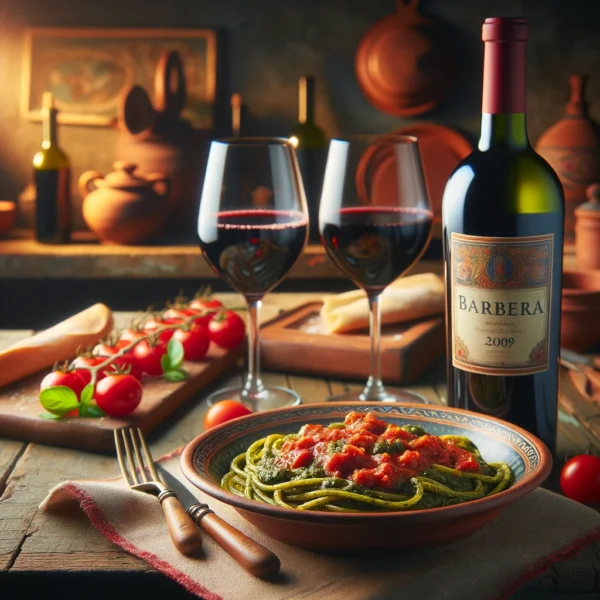
Red Wines: Bold but Thoughtful
Navigating Red Wines with Pesto
Choosing red wines for pesto dishes demands a thoughtful approach.
The goal is to enhance, not overshadow, the intricate flavors of pesto.
While whites and rosés often pair effortlessly, reds offer a boldness that requires a more nuanced selection.
Pinot Noir: Delicate Harmony
Pinot Noir, with its light body and understated tannins, presents a gentle option for pairing with pesto.
Its earthy undertones and bright fruit notes can mirror the herbal freshness of basil pesto, creating a delightful harmony.
For an ideal match, opt for a Willamette Valley Pinot Noir from Oregon.
Renowned for its vibrant cherry and raspberry flavors coupled with a hint of spice, it complements the creamy texture of pesto without overwhelming it.
The wine’s subtle complexity aligns beautifully with the rich flavors of pesto, offering a pairing that’s both elegant and satisfying.
Barbera: A Bold, Yet Balanced Choice
Barbera, a standout red from Italy, brings a different set of characteristics to the table.
Its notable acidity and minimal tannins make it a surprisingly adaptable partner for pesto, particularly those with a tomato base.
The acidity cuts through the richness of the sauce, while the wine’s inherent fruitiness—a burst of dark cherry and plum—offers a counterpoint to the pesto’s savory depth.
A Barbera d’Alba from Piedmont is an excellent choice.
This wine showcases a lively acidity and fruit-forward profile that enhances the flavors of tomato-based pesto, adding a layer of complexity to the dish.
The Art of Pairing
When pairing red wines with pesto, the key is to focus on balance.
A light-bodied Pinot Noir or an acidic Barbera can elevate pesto dishes, provided they are chosen with the dish’s specific flavors in mind.
The aim is to complement the pesto’s richness and depth with the wine’s fruitiness and acidity, creating a meal that is harmonious and memorable.
These pairings prove that, with a bit of knowledge and care, red wines can indeed be a delightful match for the nuanced flavors of pesto.
| Wine | Why a Good Match | Pesto Dishes | Serving Suggestions | Temperature | Glassware |
|---|---|---|---|---|---|
| Sauvignon Blanc
| Zesty acidity and herbaceous notes complement the fresh basil and garlic in pesto. | Traditional basil pesto pasta or salads. | Serve chilled, 8-12°C (46-54°F), in a white wine glass. | 8-12°C (46-54°F) | White wine glass |
| Vermentino | Lemony tang and almond aftertaste match pesto’s nutty and zesty flavors.
| Seafood pasta with pesto, grilled vegetables with pesto. | Serve chilled, 8-12°C (46-54°F), in a white wine glass. | 8-12°C (46-54°F) | White wine glass |
| Pinot Grigio | Subtle citrus notes enhance the dish without overpowering it. | Light pesto pasta dishes, pesto drizzled bruschetta.
| Serve chilled, 8-12°C (46-54°F), in a white wine glass. | 8-12°C (46-54°F) | White wine glass |
| Dry Rosé | Hints of red fruit and just enough body balance the pesto’s robust nature. | Various pesto dishes, including pasta and pizza with pesto.
| Serve chilled, 10-12°C (50-54°F), in a rosé wine glass. | 10-12°C (50-54°F) | Rosé wine glass |
| Pinot Noir | Soft tannins and subtle earthiness complement creamy pesto dishes without dominating the flavor. | Creamy pesto pasta dishes, chicken or salmon with pesto.
| Serve slightly cooler than room temperature, 14-16°C (57-61°F), in a Burgundy glass. | 14-16°C (57-61°F) | Burgundy glass |
| Barbera | High acidity and low tannins match well with tomato-based pesto variants; juicy cherry flavors contrast the savory sauce. | Tomato-based pesto pasta, pizza with tomato pesto.
| Serve slightly cooler than room temperature, 14-16°C (57-61°F), in a red wine glass. | 14-16°C (57-61°F) | Red wine glass |
Serving Suggestions
Pairing wine with pesto is not just about the choice of wine but also about how it’s served.
Serve whites and rosés chilled, around 8-12°C (46-54°F), to refresh the palate.
Light reds like Pinot Noir benefit from a slightly cooler than room temperature, around 14-16°C (57-61°F), to highlight their fruitiness and acidity.
Selecting the best wine for pesto dishes is an art that marries the complexity of flavors with the simplicity of enjoyment.
Whether you lean towards the crispness of a Sauvignon Blanc, the adaptability of a dry Rosé, or the light touch of a Pinot Noir, the key is balance.
By choosing a wine that complements the pesto without overshadowing it, you can elevate your meal to an exquisite culinary adventure.
Remember, the best pairing is one that delights your palate and brings joy to your table. Cheers to finding your perfect match!

Elevate Your Wine Experience with Our Exclusive Aroma Kit
🍇 Discover the Subtle Notes of White Wine 🍷
Wine enthusiasts and aspiring sommeliers, your journey into the depths of wine aromas begins here! Our meticulously crafted 24 White Wine Aroma Taster Kit is more than just an accessory – it’s your gateway to mastering the art of wine tasting.
🌟 What’s Inside?
- 24 Expertly Selected White Wine Aromas: Uncover the hidden bouquets and subtle notes that define the world’s finest white wines.
- Elegant Tasting Glasses: Perfectly designed to deliver the true essence of each aroma.
- Comprehensive Guidebook: A treasure trove of knowledge, from aroma profiles to wine pairing tips.
🌿 Set Against the Idyllic Backdrop of Lush Vineyards, this kit is a testament to the rich history and diversity of white wines. Whether you’re hosting a wine tasting party or honing your sommelier skills, this kit is your companion in exploring the nuanced world of wine.
💡 Why Choose Our Aroma Kit?
- Enhance Your Tasting Skills: Train your palate to recognize and appreciate the complex flavors in each glass.
- Perfect for Wine Lovers and Experts: Whether you’re starting your wine journey or already a connoisseur, there’s always something new to discover.
- A Unique Gift Idea: Impress the wine aficionado in your life with a gift that’s both sophisticated and educational.
🎉 Embrace the Art of Wine Tasting: With our kit, every sip becomes a story, every aroma a memory. Join us in celebrating the exquisite world of white wines – your senses will thank you!
🔗 Explore the Aroma Kit on Amazon
🍾 Raise Your Glass to a New Level of Wine Appreciation! 🥂






